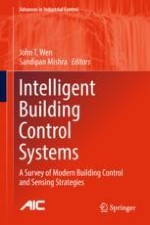Readers of this book will be shown how, with the adoption of ubiquituous sensing, extensive data-gathering and forecasting, and building-embedded advanced actuation, intelligent building systems with the ability to respond to occupant preferences in a safe and energy-efficient manner are becoming a reality. The articles collected present a holistic perspective on the state of the art and current research directions in building automation, advanced sensing and control, including:
model-based and model-free control design for temperature control;smart lighting systems;smart sensors and actuators (such as smart thermostats, lighting fixtures and HVAC equipment with embedded intelligence); andenergy management, including consideration of grid connectivity and distributed intelligence.
These articles are both educational for practitioners and graduate students interested in design and implementation, and foundational for researchers interested in understanding the state of the art and the challenges that must be overcome in realizing the potential benefits of smart building systems. This edited volume also includes case studies from implementation of these algorithms/sensing strategies in to-scale building systems. These demonstrate the benefits and pitfalls of using smart sensing and control for enhanced occupant comfort and energy efficiency.
